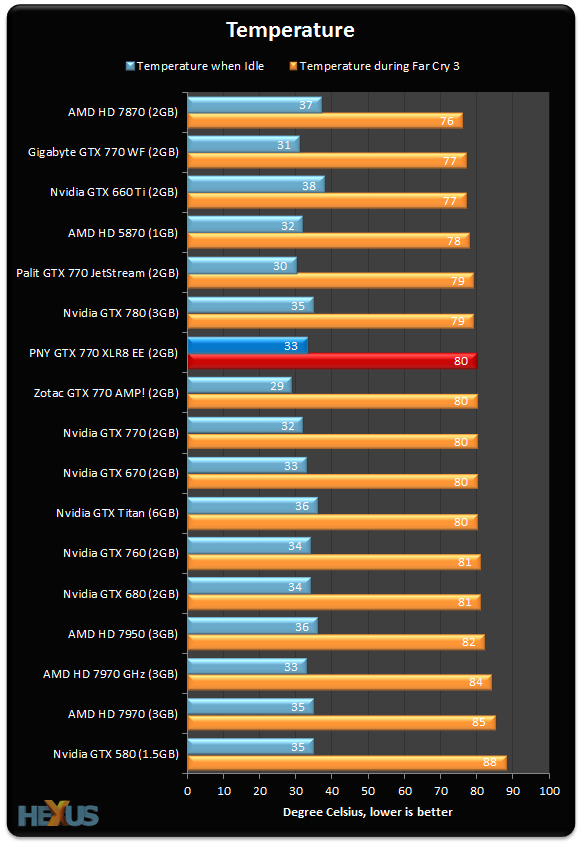Power, temps and noise

It's a surprise to see PNY's card consume up to 20W less than the immediate GTX 770 competition, though underscoring the nature of overclocked cards versus stock-clocked models, the XLR8 EE still pulls a few more watts than a standard GTX Titan.

This graph is quickly becoming boring for Nvidia cards that feature GPU Boost 2.0 technology, which by default dials in an 80°C temperature target.

Therefore the efficiency of a GTX cooler can be measured by how quiet it is when running at full chat and at an under-load temperature of 80°C or so. Better than the Gigabyte but not as quiet as the Zotac and Palit cards, PNY's XLR8 EE provides mid-pack performance here.









